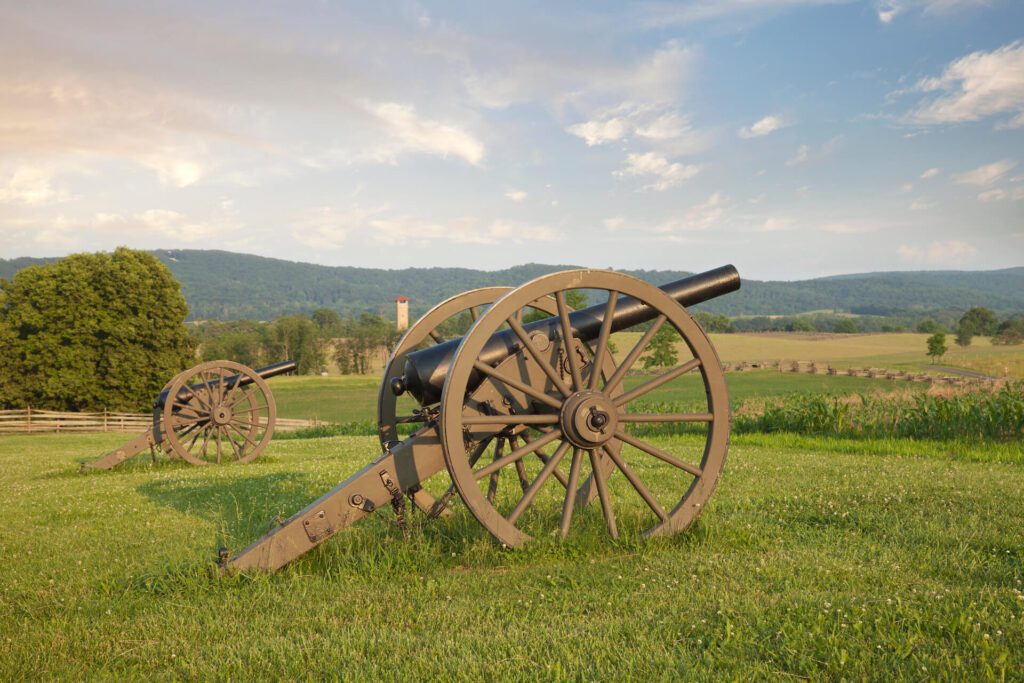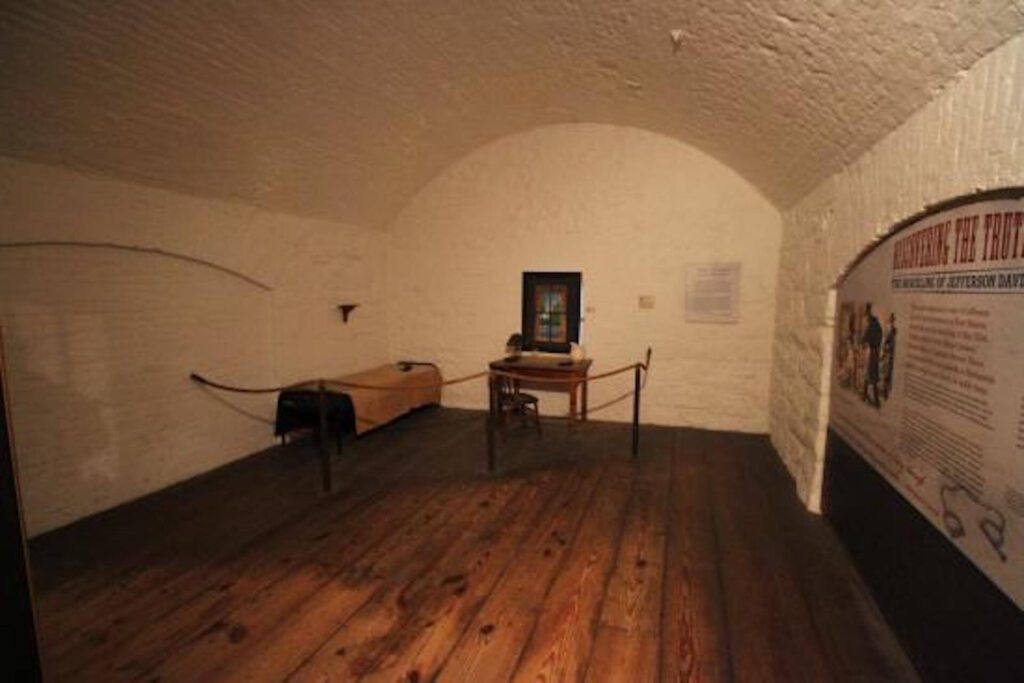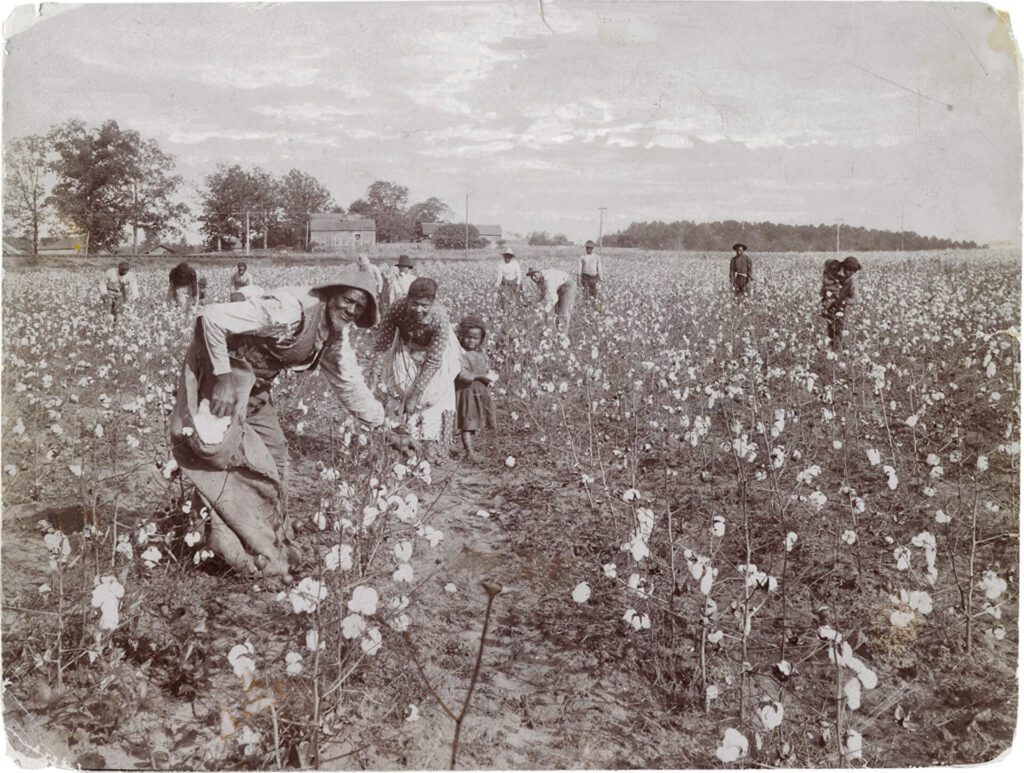Between 1861 and 1865, around three million Americans fought in the Civil War, a conflict that would eventually leave up to a million people dead, including over one hundred thousand civilians.
The bloody legacy of the conflict still reverberates today, and many aspects of Civil War historiography remain contentious. Hence, a question as supposedly straightforward as “How Did the Civil War End?” cannot be answered without acknowledging its complexity.
The following blog will outline some of the central events in the concluding months of the war and touch upon the cost of the war and its aftermath.
At Battlefield Tours of Virginia, we organize private battlefield tour experiences led by expert guides. If you are interested in touring key Civil War sites in Virginia, please explore our range of Civil War Battlefield Tours.

The End of the American Civil War
April 9, 1865, marked the beginning of the end. It was on this date, at Appomattox Court House, that General Robert E. Lee signed the ceasefire agreement of the Army of Northern Virginia, withdrawing the primary military force of the Confederate States of America from the Eastern Theater.
As news of Lee’s surrender spread across states, more and more Confederate forces abandoned arms, though intermittent hostilities would continue for some months. Lee’s surrender did not spark an immediate cessation of hostilities but guaranteed an inevitable Union victory.

Only six days after Lee’s surrender, President Abraham Lincoln was assassinated at Ford’s Theater by John Wilkes Booth, an event that would influence American politics for decades.
Booth was motivated by Confederate sympathies and hoped that the South would continue to resist defeat despite Lee’s surrender. However, the assassination would ultimately only reinforce a feeling that the war was over, and many Southerners would come to resent Booth for the killing, believing that Lincoln would have mediated reconciliation between the North and South in a way no one else could.

The weeks that followed brought the remaining chapters to a close. Confederate General Joseph E. Johnston surrendered his troops to the Union’s General William T. Sherman on April 26. Shortly after that, on May 5, the Confederate cabinet met for the final time, an event that historian James McPherson suggests marked the actual end of the Civil War.
The next significant event was the capture of Confederate President Jefferson Davis by Union cavalrymen under Major General James H. Wilson on May 10. Jefferson Davis would spend two years as a prisoner in Fort Monroe, Virginia.

The Battle of Palmito Ranch, sometimes called the final land battle of the Civil War, would occur on May 13. Although the Northern and Southern armies had been following a truce in the state of Texas, Union Colonel Theodore H. Barrett decided to attack a Confederate camp at For Brown.
The reasons for this decision remain unclear, though the Confederates, under Colonel John Salmon Ford, repulsed the attack and earned the South a final military victory.
Whether we judge this battle as part of the war proper or a post-war clash, it did result in the last combat deaths of Civil War soldiers. 22-year-old Union soldier John Jefferson Williams is widely accepted to be the last military fatality of the Civil War.

Despite the Emancipation Proclamation being issued on January 1, 1863, it is June 19, 1865 (Juneteenth), which is today celebrated as the date of the true emancipation of the enslaved people in the United States.
On this date, Union General Gordon Granger gave General Order No. 3, a legal decree that announced the enforcement of the Emancipation Proclamation in the state of Texas.

The final Confederate surrender of the American Civil War did not come until November 6, 1865. This was the day the CSS Shenandoah, captained by James Waddell, would surrender to the British Royal Navy in Liverpool.
News of the war’s end had not reached James Waddell and his crew earlier in the year, and they’d continued raiding Union whaling ships.
When Waddell eventually learned of Lee’s surrender in June, he was so afraid of being tried for piracy that he sailed to Liverpool to make his surrender there. Waddell and his crew were later exonerated for their actions, and Waddell would later return to the United States.
Readers may be surprised to learn that the formal end of the Civil War did not happen until August 20th, 1866. President Andrew Johnson signed the Proclamation—Declaring that Peace, Order, Tranquility, and Civil Authority Now Exists in and Throughout the Whole of the United States of America on this date, and, therefore, formally announced the war’s conclusion.
Plainly, the end of hostilities was a cause for rejoicing, given the number of young men who had lost their lives on the battlefield. However, the war’s end marked the beginning of reckoning, as the country had to find a way to reunite, reconcile, and survey all that had been lost.

From the Ashes: The Reconstruction Era
The Cost of the Civil War
The cost of the Civil War had been explosive. Emotionally, the American population was exhausted and traumatized. Though the lack of written records means estimates are challenging to establish, around 750,000 soldiers died, and many more were left with life-changing injuries, such as amputated limbs.
Meanwhile, the war cost the lives of as many as 50,000 free civilians and 80,000 enslaved people, mainly through starvation and the spread of diseases.
In addition to the cost of human lives, the war is estimated to have economically cost the United States $5.5 billion.
In short, the country was irrevocably changed and was forced to adapt to an entirely different way of life in what almost seemed like overnight.

The Reconstruction Era, 1865–1877
Following Abraham Lincoln’s death, his successor, Andrew Johnson, largely discarded Lincoln’s plans for the country’s reconstruction. Johnson failed to unite the North and South, and powerful landowners in the South immediately pushed to retain the power they had before the Civil War started.
Johnson refused to provide the kind of oversight people expected from Lincoln during the Reconstruction Era. For Johnson, so long as he delivered emancipation, ensured the repayment of Southern debts, and had the South’s allegiance to the Union, he was happy to leave the Southern states to get on with rebuilding by themselves. It was a policy closer to appeasement than meaningful reconciliation.
Although institutions like the Freedman’s Bureau began organizing education and support for the freed enslaved people and impoverished southern whites, many aspects of life in the South would return to how they had been before the war. For some, conditions would even be worse.
The same powerful landowners continued owning the South’s land after the war. Union General William T. Sherman had proclaimed Special Field Order No. 15 during the war to guarantee “Forty acres and a mule” to freed families. However, President Johnson worked to reverse the efforts, and most land commandeered during the war for land redistribution was returned to its white owners.

By the late 1860s, a culture of sharecropping had developed. Although poor black and white workers were not living under slavery with sharecropping, many people became so indebted to landowners that they were living in quasi-serfdom.
Furthermore, laws were passed that meant black prisoners could be forced to work the land during their prison sentence; these laws were widely abused to bring large numbers of black freedmen back into circumstances in which they worked without pay.
However, Reconstruction did bring some lasting positive changes. For the first time, politically mobilized freed slaves joined with white allies to bring the Republican Party to power and, with it, a redefinition of the responsibilities of government.
Widespread education became standard for many impoverished white and recently freed black communities. And Reconstruction saw black politicians serve in Congress for the first time in American history.
Reconstruction remains one of the most hotly debated topics in American history. It is seen by some as an upright disaster and by others as a move in a positive direction (even if it met as many setbacks as it served up successes).
However, our assessment of Reconstruction today is inextricably bound to the Civil War that preceded it and embodies the upheavals triggered by the war’s end.

If you want to further your knowledge of this chapter in American history, there’s no better way than turning American Civil War battlefields in the company of an expert guide. Browse our Battlefield Tours in Virginia, Civil War Combo Tours, and Custom American Civil War History Tours options.
If you have any questions, please get in touch.


